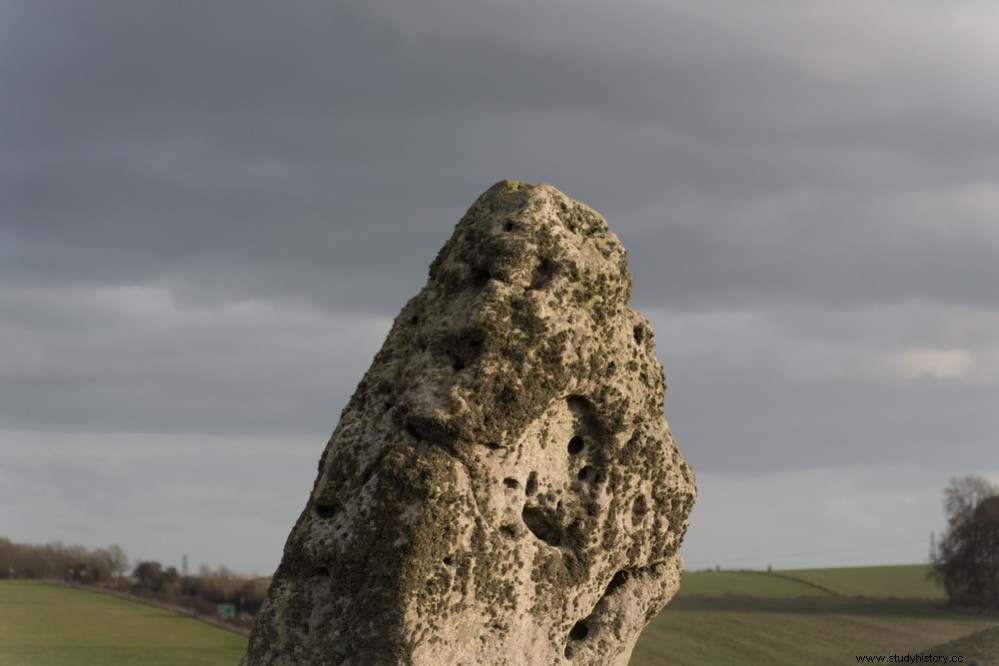Stonehenge is made up of four concentric circles of stone blocks. The largest are those on the outside, large sandstone stones originally crowned by lintels, of which only seven remain in place today. The inner circumferences are composed of smaller and other stones, the 42 called bluestones or bluish sandstone stones.
It has long been known where these bluestones come from, the Preseli Hills in west Wales, some 140 miles away from the monument. But only very recently have the exact geological sources been identified. Two of those quarries, Carn Goedog and Craig Rhos-y-felin, have now been excavated revealing evidence that the megaliths were mined 5,000 years ago, the same time as the first phase of Stonehenge's construction.
In a study published in Antiquity researchers from University College London, Bournemouth University, the University of Southampton, the University of the Highlands and the National Museum of Wales, led by Mike Parker Pearson (who a few years ago found the settlement of a thousand houses near Stonehenge ), pinpointing the exact locations and revealing how and when the stones were mined.
According to Pearson all other Neolithic monuments in Europe were built with megaliths brought from no more than 10 miles (16 kilometers) away. We seek to find out why the Preseli Hills were so special 5,000 years ago, and if there were any other stone circles there, built before the bluestones were moved to Stonehenge .
The largest quarry was found 289 kilometers away, on the northern slopes of the hills. It is the outcrop of Carn Goedog, and from it come at least five of the bluestones of Stonehenge. In the valley next to Carn Goedog, another outcrop was identified as the source of the monument's rhyolite stones (another type of igneous rock).
According to the study, the bluestone outcrops are formed by natural vertical pillars, which could be extracted by opening joints between them, which is a simpler method than that used in Ancient Egypt, where the obelisks had to be carved directly into the rock. Thus the Neolithic stonemasons only had to insert wedges into the joints to separate the pillars to the foot of the outcrop.

Although it is likely that most of his equipment consisted of perishable ropes and wooden wedges, mallets and crowbars, they also left behind other tools such as hammerstones and stone wedges. Pearson indicates that the stone wedges are made of imported clay, much softer than the hard dolerite pillars. Hammering in a hard wedge could have created stress fractures and cracking of the pillars. Using soft wedges they ensured that if anything broke, it was the wedge and not the pillar.
Archaeological excavations at both outcrops found remains of artificial earth and stone platforms, with the outer edge of each platform terminating in a drop of approximately one meter. Thus, the bluestone pillars could be lowered onto this platform that acted as a loading dock, to be lowered onto wooden sleds before being dragged.
On the platforms of both quarries, the researchers found carbon remains dated around 3000 BC, which has served to date the extraction of the megaliths.
The team believes that Stonehenge was initially a circle of rough, unworked bluestone pillars set in shafts known as Aubrey Holes near Stonehenge, and that the large sandstone blocks were added about 500 years later.
The new discoveries also cast doubt on the popular theory that the bluestones were transported by sea, as both quarries are on the northern slopes of the Preseli Hills, from where they may have been transported overland to Salisbury Plain.
Fonts
Pearson, M., Pollard, J., Richards, C., Welham, K., Casswell, C., French, C., … Ixer, R. (2019). Megalith quarries for Stonehenge’s bluestones . Antiquity, 93(367), 45–62. doi:10.15184/aqy.2018.111 / University College London
